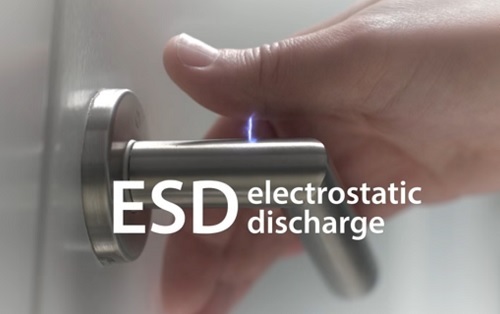Electrostatic Effects
Electrostatics is a branch of physics that deals with the phenomena and properties of stationary or slow-moving electric charges. In this article, we will explore the various aspects of electrostatic effects, including the electric field force generated by static charge, electrostatic discharge (ESD), and electrostatic field induction. By delving into these concepts, we can better understand the underlying principles of electrostatics and their applications in our daily lives.
Electric Field Force Generated by Static Charge
An electric field is a region around a charged object where an electric force is experienced by other charged objects. The strength of the electric field is directly proportional to the magnitude of the charge generating it and inversely proportional to the square of the distance from the charge. Mathematically, the electric field (E) generated by a point charge (Q) is given by:
E = k * Q / r^2
where k is the electrostatic constant (8.99 x 10^9 Nm^2/C^2), and r is the distance between the point charge and the point in the electric field where we want to calculate the field strength.
The electric field force (F) experienced by another charge (q) placed in the electric field is given by:
F = q * E
This force obeys Coulomb’s Law, which states that the force between two point charges is directly proportional to the product of their charges and inversely proportional to the square of the distance between them.
Understanding the electric field force generated by static charge is essential in many practical applications. For example, in the design of electronic devices, engineers must consider the effects of electric fields on the behavior of charged particles to ensure proper functioning and avoid potential damage.
Electrostatic Discharge (ESD)
Electrostatic discharge (ESD) is the sudden flow of electricity between two electrically charged objects caused by contact, an electrical short, or dielectric breakdown. ESD can occur when two objects with different charge levels come into contact, allowing the excess charge to be redistributed, equalizing the charge level between them.
ESD can be observed in everyday life, such as when a person touches a metal doorknob after walking on a carpeted floor, causing a small spark or shock. While such instances are usually harmless, ESD can cause severe damage to electronic components and pose a risk to human safety in certain industrial environments.
To prevent damage from ESD, several precautions are taken, including:
- Grounding: Ensuring that charged objects are grounded to a common potential, reducing the risk of ESD.
- ESD protective packaging: Using packaging materials that dissipate electrostatic charges to protect sensitive electronic components during transportation and storage.
- ESD-safe workstations: Designing workstations with proper grounding, electrostatic dissipative surfaces, and humidity control to minimize the risk of ESD when handling electronic components.
Understanding the causes and effects of ESD is crucial in the electronics industry, where even a small discharge can cause irreparable damage to sensitive components, leading to costly repairs and replacements.
Electrostatic Field Induction
Electrostatic induction, also known as electrostatic influence, is the process by which a charged object influences the distribution of charges in a nearby neutral object without direct contact. When a charged object is brought near a neutral conductor, it induces an opposite charge on the conductor’s surface closest to the charged object and an equal amount of like charge on the farthest surface. This redistribution of charges is due to the mutual repulsion of like charges and the attraction of unlike charges.
A common example of electrostatic induction is the process of charging an electroscope. An electroscope is an instrument used to detect the presence of electric charge. When a charged object is brought close to the electroscope’s metal plate, it induces charges on the plate, causing the attached leaves to repel each other, indicating the presence of an electric charge.
Electrostatic induction plays a crucial role in numerous applications, such as:
- Capacitors: Devices that store electrical energy by inducing charges on their conductive plates.
- Transformers: Devices that use the principle of electrostatic induction to transfer electrical energy between different voltage levels in an alternating current circuit.
- Electrostatic painting: A technique that uses electrostatic induction to apply a uniform coating of paint to an object’s surface, improving the efficiency and quality of the painting process.
By understanding the various aspects of electrostatic effects, including electric field force, electrostatic discharge, and electrostatic induction, we gain a deeper insight into the principles governing the behavior of electric charges. This knowledge is essential for advancing our understanding of the physical world and developing technologies that harness the power of electrostatics for a wide range of applications




Leave a Reply
Want to join the discussion?Feel free to contribute!